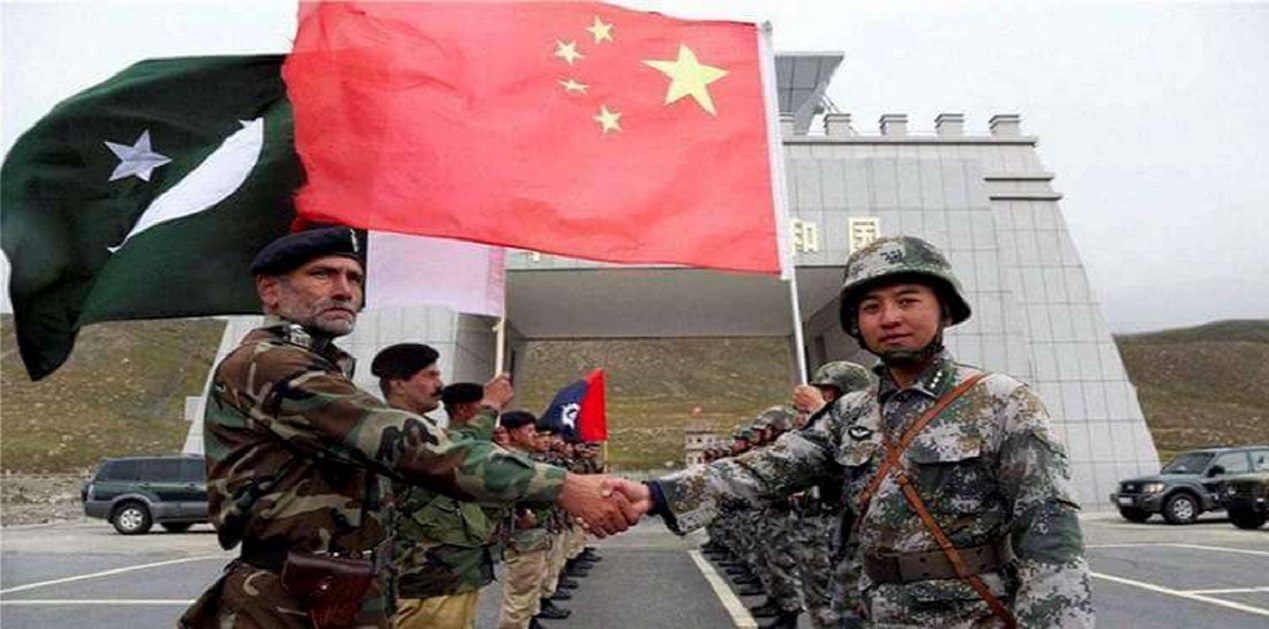The “Annual Threat Assessment Report” released by the US Directorate of National Intelligence on 11th March is being widely discussed these days as it has warned that the escalation of tension between India and China in one theatre and India and Pakistan in another may result in large- scale conflict in 2024.
Speaking on China, the report warns that the fast development of infrastructure and continued amassing of troops by both, India and China, along the Line of Actual Control resulting in “sporadic encounters between opposing forces risk miscalculation and escalation into armed conflict”.
Similarly, it says “Pakistan’s long history of supporting anti-India militant groups and India’s increasing willingness, under the Modi government, to respond with military force to the perceived or real provocations from Pakistan raise the risk of escalation during a crisis”.
However, an in- depth examination of these threat perceptions for 2024, as mentioned in the report, reveals that it is perhaps yet another case of the well-known American paranoia on perceived developments just like the possibility of an imminent nuclear attack by Russia that the U.S. had been warning for more than one year now. The American intelligence is known for its frequently utterly wrong calculations leading to goof-ups and embarrassments in front of the international community like in case of its exodus from Afghanistan. These calculations are simply based on the assumption that the increasing military build-ups by both sides along the LAC must result in a conflict. This might have been true in old times, but in contemporary world, the transformation a military build-up into a real conflict is not inevitable but is, on the contrary, a very rare and remote possibility. During the last seventy-nine years after the World War II, there had been numerous occasions where a nuclear flash point was almost reached but it could not transform into a real organised conflict. Here, one might tempt to give the example of Russia-Ukraine war to argue that Russian military build-up had resulted in the conflict. But we must not forget that in this case, the military strengths of the sides involved were initially highly unequal as one was a power with most nuclear warheads and the other was much tinier in area and military strength. However, with the indirect (and possibly direct now) entry of the NATO and EU in the war zone, it has not proved to be a cake-walk for Russia and now it has become an unending nightmare for both sides. Similarly, in case of India and China, both sides have a comparably similar Army and Air Force. Though the Chinese Navy is stronger than its Indian counterpart, it becomes irrelevant as the actual theatre might largely be along their land border. Similarly, the nuclear power of both is likely to balance out each other (through there is a difference in number of N-warheads each has) as nuclear arsenal has so far been used as a deterrent only after the WW-II.
Moreover, after 1962, China has only been trying to prod India from time to time through its failed attempts of incursion in Nathu-la, Jelep- la and lately in Galwan valley but has not dared to wage a large- scale war against India due to the latter’s growing power and international clout. Thirdly, since China is directly and deeply involved in the Indo-Pacific region and indirectly in Russia-Ukraine and Israel-Hamas conflict, it would not like to open a new full-fledged front with the militarily newly transformed India specially when the Chinese Army is yet to gain as much experience in high altitude warfare as the Indian Amy has. Fourthly, the slowing down of Chinese economic growth due its tottering real estate sector, one of the two main engines of Chinese economy (the other being the manufacturing sector, already suffering from consumption crisis) has compelled China to rethink about its domestic and foreign policies. Last, but not the least, the failure of its BRI to produce any tangible economic development in the perceived beneficiary states, resulting in their growing resentment against China due to the debt-trap, has also put the latter in a spot. Though, reportedly China has agreed to start CPEC-2 for Pakistan to an obvious and justified discomfiture of India and her resultant protest, this plan also might end up with the completion of maximum one third of the projects like the CPEC-1 did.
Thus, though there might be low-scale clashes between the two giant neighbours in recent past, the possibility of a large- scale military conflict in the current year (as warned by the US Intelligence Report) seems to be far-fetched for now.
As regards Pakistan, yes, it is true that Pakistan keeps provoking India with its support to the anti-India terrorist organisations based in the Pak territory. But the well-calibrated policy of our government and armed forces towards this menace will restrain us to initiate a full-fledged military conflict against our rogue western neighbour. Secondly, Pakistan’s domestic problems viz. an economy on the verge of collapse, a mounting resentment in the Pak public against the government’s Kashmir policy which could not fetch any desired result and their appeal to the Government of Pakistan to resume business with India to mitigate the scarcity of essential commodities in the country, will perhaps not allow Pakistan to take any drastic step to provoke India which might boom-rang against the fragile government hung by the thread of army’s support.
Though Pakistan’s new government has expectedly raised the Kashmir issue locally and tried to malign India in the U. N. again on the Ram Mandir and Citizen Amendment Act (CAA) issues, but, caught in its own problems and having no friendly relations with its western neighbours (Afghanistan and Iran) either, it is highly unlikely that Pakistan would to something in 2024 to jeopardise its own existence.
(The paper is the author’s individual scholastic articulation. The author certifies that the article/paper is original in content, unpublished and it has not been submitted for publication/web upload elsewhere, and that the facts and figures quoted are duly referenced, as needed, and are believed to be correct). (The paper does not necessarily represent the organisational stance... More >>
Image Source: https://sundayguardianlive.com/wp-content/uploads/2021/06/1-Nalapat-China-Pak-war-edited.jpg










Post new comment